WELCOME RECEPTION
ISWCS 2006 delegates and accompanying persons are invited to join the Welcome Reception which will be held at the garden terrace of the Astoria Palace, a hotel placed at a privileged location in the heart of the city - just 100 metres from the town hall, in the financial, commercial, cultural and monumental centre.
The Welcome Reception will start at 20:30 with a presentation from Alcatel on mobile and wireless technologies for the 32nd America's Cup that will take place in Valencia. The presentation will be provided by Mr. Pierre Germeau, the America's Cup Project Manager from Alcatel Mobile Communications Group.
Location
Hotel Astoria Palace
Plaza de Rodrigo Botet, 5
46002 Valencia
Garden Terrace (Floor 9)
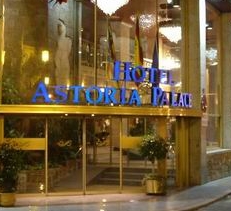
|
Location Map

|
Before the Welcome Reception, all the delegates are offered to enjoy a guided visit to Valencia. Transport to the "Torres de Serrano" will be provided from the conference building at 18:25.
The guided visit to Valencia will start at 19:00 from the "Torres de Serrano".
TORRES DE SERRANO
They are, in fact, one of the two entrance doors to the medieval Valencia, as part of an old city wall built in the XIV century, essential in the militar defence of the city. The Torres de Serrano are considered as the most impressive gothic city walls of Europe
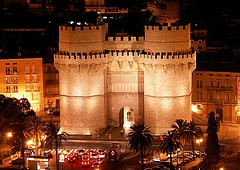
PLAZA DE LA VIRGEN
It's one of the most traditional and visitedspots of the city. On one side, stands the Basílica de los Desamparados, and on the other, one of the towers of the Palau de la Generalitat. In the centre, lots of tourists take photos of the fountain, built to pay tribute to the river Turia and the eight small rivers that crossed the fields around the city in the past centuries.

BASÍLICA DE LA VIRGEN DE LOS DESAMPARADOS
You can find it in the square that bears the same name, and it's a baroque construction that honours the gothic sculpture of "Mare de Déu dels Desamparats", patron saint of the city. The decoration inside the basílica is, in most of its part, a transitional style between baroque and neoclassicism. It is the only church of the old part of the city, which has not been built on top of old ruined parish churches.
It is connected to the cathedral by means of a gothich arch.
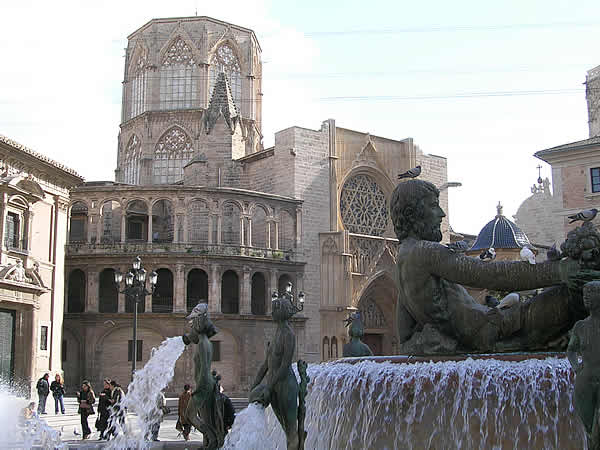
THE CATHEDRAL
Because of its particular construction (it was started in the XIII century, finished in the XV century with an early gothic style, and later reformed in the XVIII), the cathedral of Valencia has three main doors: romanesque if we are in the Palau street, gothic if we are in the Plaza de la Virgen, and baroque if we are in the Plaza de Zaragoza.
The most interesting aspect is probably the belfry, one of the symbols of the city, known as the Miguelete.

MIGUELETE
The dome of the cathedral of Valencia constitutes a belfry 50, 85 high, and 207 steps. This octagonal building has a sixteenth century bell. It owes its name to the date when it was inaugurated, on September 29th 1418, day of the archangel Saint Michael. Anyone who visits it will be shocked with the wonderful views of the city seen from the top of this belfry.
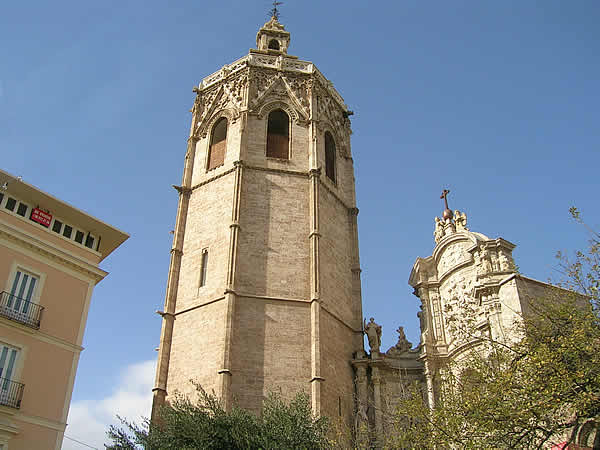
PLAZA DE LA REINA
It's one of the most important and busy squares of the city. From it, you can see the back façade of the cathedral, the Miguelete or the tower of Santa Catalina church. There's the possibility of quietly sitting to relax in one of the benches of the garden area next to the fountain and the palm trees.
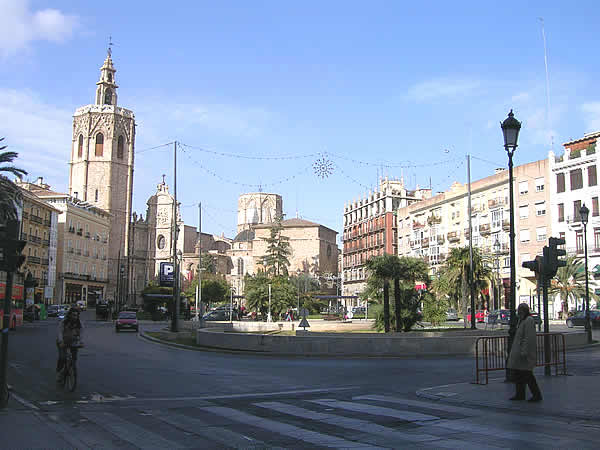
MARQUÉS DE DOS AGUAS PALACE
This palace is the main example of the splendour of the XVIII century in Valencia. The white marble façade has a "churrigeresco" style and it has many halls that still preserve their original style. Inside, you can find the National Museum of Ceramics González Martí. 
THE CITY HALL
A building of eclectic style combining neobaroque and other elements from different architectural schools, it was built at the beginning of the century on the same spot where the old Casa de Enseñanza had been. Inside, the main stairs, the Crystal Hall, the semicircular Hall where the city government members meet and the Historical Records Office. 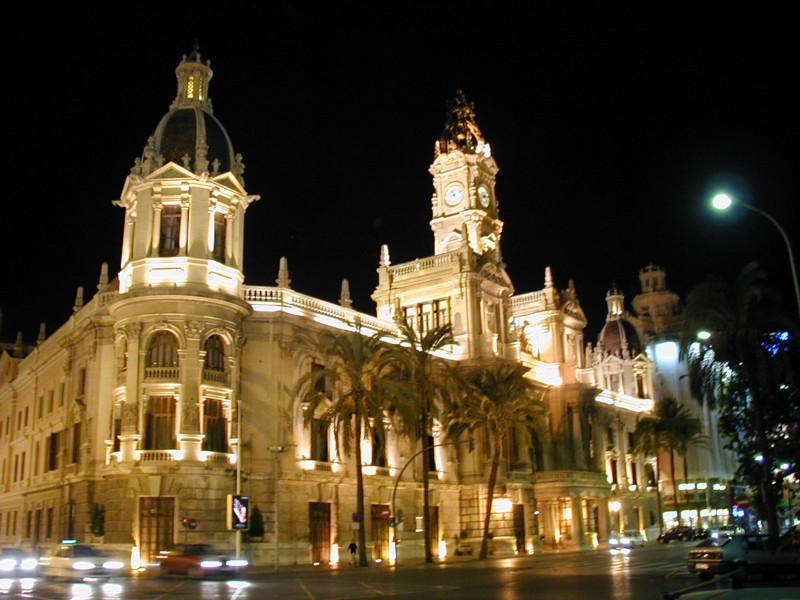
|